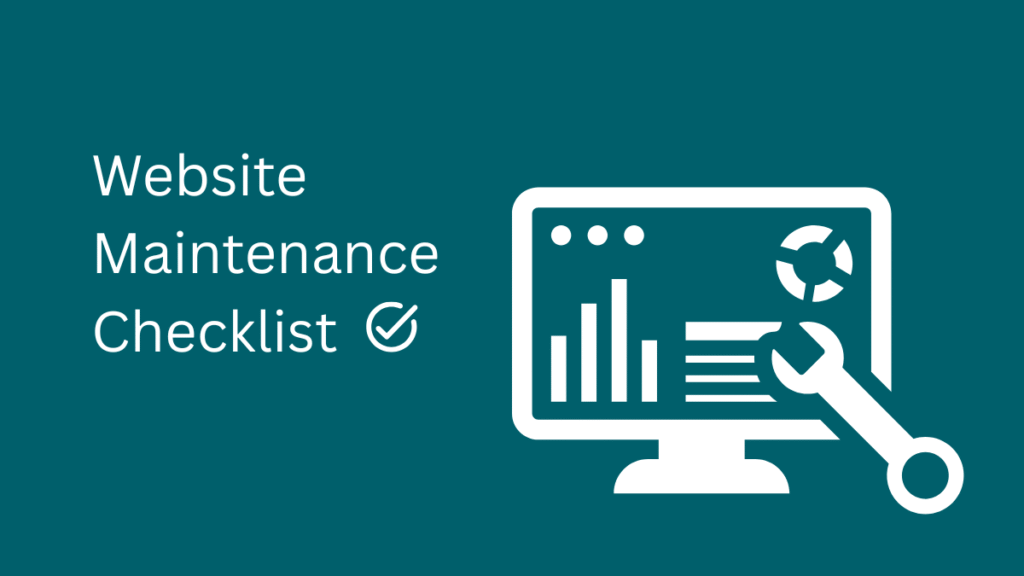
Whether you’re running a local café in Edinburgh, a law firm in Glasgow, or a healthcare (private or occupational health) firm in Aberdeen, your website is your 24/7 shop window. Yet, too many UK business owners launch a site and forget that, like any asset, it needs regular care.
Neglect it, and you risk broken features, outdated content, or even security vulnerabilities. But with a simple, monthly website maintenance routine, you can keep your site performing at its best, without needing to hire a developer.
Website Maintenance Checklist:
This monthly website maintenance checklist UK edition is designed to help you maintain your site with confidence. But if you’d rather focus on your business while an expert team keeps your site in top shape, Fivethy is here to help.
1. Check That All Pages Load Correctly
Start with a visual inspection. Visit your homepage, contact page, blog, and service pages. Do they display correctly on both desktop and mobile? Are there any formatting errors, missing images, or slow-loading elements?
Pro Tip: Tools like BrowserStack let you preview how your site performs on various browsers and devices.
Want it done for you? Fivethy offers monthly UX checks across all major devices to ensure a consistent, polished look.
2. Run a Basic Site Audit (Free Tools You Can Use)
A monthly site audit highlights broken links, slow pages, SEO issues, and technical glitches.
Recommended site audit tools:
- Ahrefs Webmaster Tools (Free): Great for spotting SEO issues.
- Screaming Frog SEO Spider (Free up to 500 URLs): Ideal for small sites.
- Google Search Console: Detects crawl issues and indexing problems.
These tools give you a snapshot of your site’s health and show what needs fixing.
Prefer hands-free? Fivethy’s audit service includes monthly reporting, actionable fixes, and keyword tracking tailored for UK search trends.
3. Update WordPress Core, Themes, and Plugins
If your site runs on WordPress, updates are essential for both functionality and security.
- Login to your WordPress dashboard
- Check for updates under Dashboard > Updates
- Always back up your site before updating anything
Pro tip: Stick to well-supported plugins and avoid “nulled” themes or random sources. They’re often entry points for malware.
With Fivethy’s WordPress website maintenance plan, updates are handled safely and automatically, with rollback support if anything goes wrong.
4. Backup Your Website (Don’t Skip This)
Think of backups as insurance. A single faulty plugin update could crash your site. Without a backup, you’re stuck.
What to do:
- Schedule automated weekly backups
- Keep at least one monthly backup stored off-site (like Google Drive or Dropbox)
- Use plugins like UpdraftPlus or BlogVault
Fivethy automates full-site backups weekly and keeps offsite copies for peace of mind.
5. Check Security Logs & Scan for Malware
Cyber threats in the UK increased by over 30% in 2024, especially targeting small businesses. If you collect client data, process payments, or run lead forms, this step is non-negotiable.
Use security plugins like:
- Wordfence
- iThemes Security
- Sucuri Security
Run a scan and check logs for suspicious login attempts or changes to core files.
Fivethy includes proactive malware monitoring and immediate alerts in their website maintenance care plans.
6. Test Site Speed and Performance
Fast-loading websites aren’t just nice to have, they boost conversions and SEO rankings.
Test using:
- Google PageSpeed Insights
- GTmetrix
- Pingdom Tools
If your scores are poor, optimise images, enable caching, or consider moving to a better hosting provider. For WordPress, LiteSpeed Cache (if your host supports it) or WP Rocket are great options.
With Fivethy, we don’t just test, we fix. Speed optimisations are included in all performance-focused packages.
7. Review and Update Content
Stale content affects both SEO and trust. Each month, update at least one blog post or service page.
Check for:
- Outdated information
- Broken links
- Missing meta descriptions or tags
- Opportunities to add internal links to newer pages
Bonus SEO tip: Refreshing old blog posts can give them a ranking boost—Google loves fresh content.
Not sure what to update? Fivethy provides content audits and SEO copywriting to keep your site ranking and relevant.
8. Test All Contact Forms and CTAs
One of the easiest things to overlook, and potentially costly, is a broken contact form or call-to-action (CTA) button.
Each month:
- Send a test message via your contact form
- Click all CTA buttons (e.g. “Book Now”, “Request Quote”)
- Check that you receive the notification emails
With Fivethy, all key forms and CTAs are tested monthly, so you never miss a potential customer.
9. Monitor Traffic and Goals via Google Analytics
If you’re not measuring, you’re guessing.
Login to Google Analytics and review:
- Monthly traffic trends
- Top-performing pages
- Bounce rate
- Conversion goals (e.g. contact form submissions)
This helps you understand what’s working, and what isn’t.
Want deeper insights? Fivethy includes analytics reporting with recommendations you can act on, or let us handle them for you.
10. Review Legal & Compliance Pages
Make sure your Privacy Policy, Cookie Notice, and Terms & Conditions are still relevant and up-to-date, especially with ongoing changes to UK GDPR and cookie laws.
Free tools like Termly or Cookiebot can help keep your site compliant.
We can help you stay compliant. Fivethy includes legal page reviews and cookie script updates in our care packages.
Want to Skip the Website Maintenance DIY?
Managing your website should feel empowering and not overwhelming. This website maintenance checklist is your monthly go-to, but if you’d rather spend your time running your business (and not your backend), let Fivethy handle it for you.
We offer tailored WordPress maintenance, performance tuning, SEO updates, content audits, and security monitoring for businesses across Scotland and the wider UK.
Book a free site health check at Fivethy today, and breathe easy knowing your site is in safe hands.
Pingback: Broken Links On Website | 5 Ways UK Businesses Can Fix Them